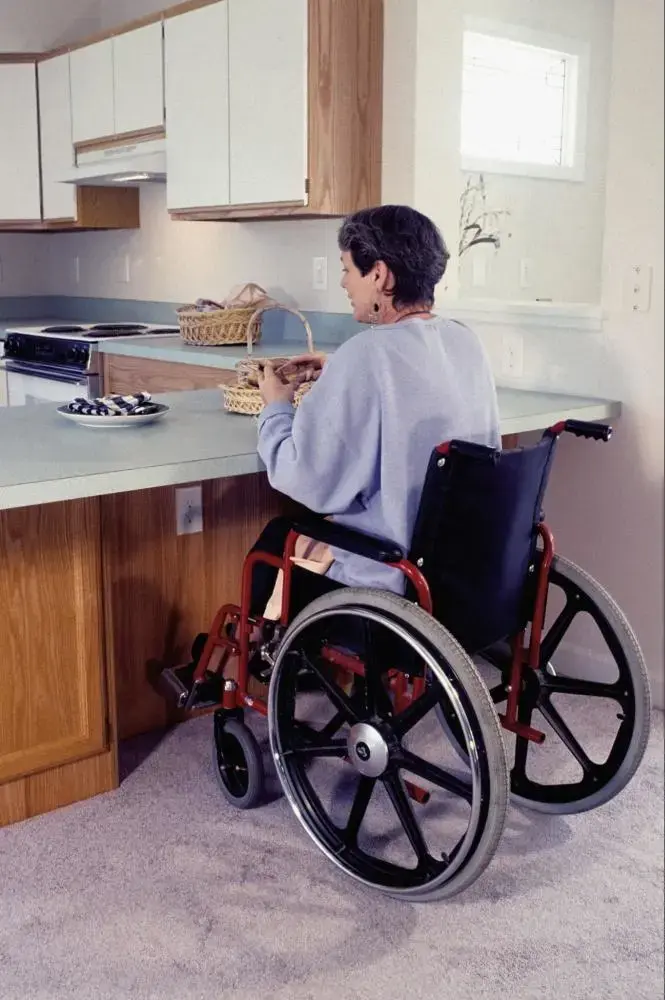Does Medicare Pay For Wheelchairs?
What to know about Medicare plans and their wheelchair coverage policies and requirements.
Our content follows strict guidelines for editorial accuracy and integrity. Learn about our and how we make money.
It is estimated that over 25.5 million Americans live with disabilities that make traveling outside of the house difficult. More than 13.4 million of these Americans are adults between 18 and 64 years of age.
If a cane or walker isn't enough and a medical condition keeps you from moving freely around your home, a wheelchair might be a good alternative.
This article will tell you about Medicare coverage, which plan is best for you, and how its various policies can help provide coverage for a wheelchair to help with your mobility challenges.
What Is Medicare?
Medicare is a United States federal health insurance for people 65 or older, some younger people with disabilities, as well as people with End-Stage Renal Disease (ESRD) or Amyotrophic Lateral Sclerosis (ALS).
The federal Medicare program has two main sections, Original Medicare and Medicare Advantage. Each section comprises of various parts that offer different premiums, deductibles, coverage, and costs.
Here is a breakdown of Medicare and its parts.
The Different Parts of Medicare
Medicare Part A refers to inpatient treatment and hospital care, including hospital stays, hospital treatments, and general nursing costs.
Medicare Part B relates to outpatient medical coverage and includes preventive treatments, doctors’ consultations, scans, and tests.
Part C/Medicare Advantage Plans are health plans offered by insurance companies that have contracts with Medicare. These policies cover Part A, B, and D expenses, including costs for hospital care, prescription drug coverage, and doctor’s visits.
Stand-Alone Part D Plans (Prescription Drug Plans) cover self-administered prescription drugs. For example, medications for high blood pressure, pain tablets, and antidepressants.
Medicare Supplement Insurance is a health plan for people who have Original Medicare that covers out-of-pocket costs such as deductibles, coinsurance, and copayments.

Source: Pexels
Does Medicare Pay for Wheelchairs?
When you have a mobility issue inside of your home, Original Medicare (Part A and Part B), as well as Medicare Advantage Plan (or Part C), will both provide coverage for wheelchairs and walkers.
These items are categorized as “Durable Medical Equipment” (DME) and are specifically covered by Medicare Part B.
Medicare Advantage will also cover DMEs and, in some cases, depending on individual policies, can also cover home modifications such as wheelchair ramps or bathroom grab bars.
Medicare Part B pays for a wheelchair when you have mobility issues inside your home. However, it won’t pay for durable medical equipment if you are only finding it difficult to get around outside your home.
How Can I Find Coverage for a Wheelchair with Medicare?
If you are looking for more guidance or any information regarding Medicare, send your questions to Help@PolicyScout.com or call us on 1-888-912-2132 to get personalized assistance from one of our skilled Medicare consultants.

Source: Pexels
What Criteria Are Considered for Wheelchair Coverage?
Medicare Part B will cover the costs of your wheelchair or other durable medical equipment if your primary physician or health care provider writes an order for durable medical equipment to aid your mobility. The order will need to state that:
Mobility issues are caused by a medical condition that is preventing you from taking care of your daily needs
You are able to operate the type of equipment you’re requesting
The Medicare provider has authorized both your doctor and the medical equipment supplier
You can use the device safely in your home

Source: Unsplash
How Do I Get Medicare to Cover a Wheelchair and How Much Will It Cost?
Follow these steps to get Original Medicare to cover your wheelchair:
Get a Prescription
In order to begin the process of getting a wheelchair, your physician (who must be enrolled with Medicare) must first prescribe durable medical equipment for you.
It is also required that you have a face-to-face examination to diagnose, treat, and manage the medical condition that makes having a wheelchair necessary.
This exam must be documented by your doctor and include your past and present mobility history, the result of the examination, and the relevant details to support the medical need at home.
Submission of a Standard Written Order
The practitioner who performed your examination must put together a Standard Written Order (SWO.). This document allows suppliers to request approval for DMEs such as wheelchairs.
The SWO must be sent to a Medicare-approved wheelchair supplier before it can be delivered. The SWO must be submitted within six months after the face-to-face examination.
Get Approval
Once the SWO has been approved, your wheelchair supplier must submit a prior authorization request and all the other relevant documents to Medicare on your behalf.
Medicare will then review the information and either issue a provisional affirmation (approval) or a non-affirmation (no approval).
You may be denied your prior authorization request if they discover that having a wheelchair is not medically necessary or if they were not supplied with enough information to make a decision.
Paying for the Wheelchair
If you receive a provisional affirmation from Medicare, you will pay your annual Part B deductible, as well as 20% of the Medicare-approved amount. Medicare will cover the remaining 80% of the wheelchair’s cost.
Manual Wheelchair vs. Power Wheelchair
Medicare pays for both manual and power wheelchairs. However, prior authorization from your DME supplier will be required before they will do so.
Manual Wheelchairs: Devices that are powered by the user.
Power Wheelchairs: Wheelchairs that are powered by an electric motor.
Keep in mind that both your prescribing doctor and DME supplier must be registered with the Centers for Medicare and Medicaid Services (CMS) if you want your wheelchair covered.

Source: Unsplash
Cost of Coverage (Rental vs. Buying)
Depending on your circumstances, you may be required to either buy or rent DME equipment such as walkers, blood sugar monitors, or complex rehabilitative power wheelchairs. In some cases, you may be given the option to do either.
If Medicare approves your DME provider, they will know if Medicare allows you to buy or rent specific DMEs. Medicare usually pays for DME equipment on a rental basis, but may opt to purchase equipment that is inexpensive and commonly bought.
Renting a Wheelchair
When renting a wheelchair through Medicare, usage will typically be paid monthly. The number of these monthly payments varies depending on the equipment.
The rental payments of the items, however, cannot exceed the price that Medicare sets to buy them. For 13 months of continuous use, Medicare typically pays rent for more expensive DMEs and once that period is over, the equipment must be transferred to you.
The DME supplier will collect the equipment when you are finished using them or if they need repairs. The supplier must also cover costs associated with the repair or part replacements.
Buying a Wheelchair
Buying the equipment will give you complete ownership of the DME. If the wheelchair needs to be replaced or repaired, Medicare may cover the cost.
You will be required to pay 20% of the approved cost while Medicare will cover the remaining 80%.
If the wheelchair is stolen, lost, badly damaged, or used beyond its useful lifetime of around five years, Medicare will usually replace it.
Criteria for Getting Wheelchair Coverage
Medicare Part B will cover wheelchairs if you have mobility difficulties inside of your home. Medicare will not pay for wheelchair coverage if you are only having trouble getting around outside of your home.

Source: Unsplash
Which Medicare Plan Is Best If I Know I Need a Wheelchair?
If you think you’re going to need a wheelchair and are eligible for Medicare coverage, you will need to decide which plan will best meet your needs.
Head over to PolicyScout to find the best wheelchair coverage for you.
If you are looking for up-to-date and accurate information about Original Medicare, Medicare Advantage Plans, or anything Medicare-related, head to PolicyScout’s Medicare hub to compare your options and find the best plan in your area.
If you are looking for more guidance, send your questions to Help@PolicyScout.com or call us on 1-888-912-2132 to get personalized assistance from one of our skilled Medicare consultants.
Frequently Asked Questions
Which Electric Wheelchair Brands Do Medicare Cover?
Medicare covers up to 40 different types of powered Wheelchair brands. Remember that each of these wheelchair types will require prior authorization before Medicare will pay for them.
How Do You Sign Up for Medicare?
There are three different ways that you can sign up for Medicare.
Sign up online at SocialSecurity.gov
Calling Social Security at 1-800-772-1213, and TTY users (the deaf or hard of hearing) can dial 1-800-325-0778
You can also sign up in person at your local Social Security office
What Is the Medicare Deductable for 2022?
During a benefit period, a Medicare Part A deductible of $1,556 is required during a benefit period when you are admitted to a hospital. For Medicare Part B, the deductible will cost you $233 annually. For Medicare Advantage and Part B, the deductible varies depending on the policy.

Source: Pexels